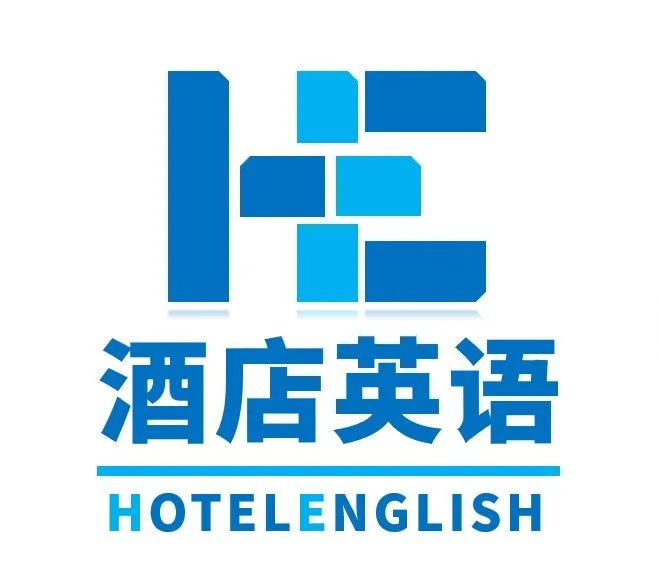
助力酒店管理|提升英语能力

Unit 3 Dinner Service
餐饮基础知识
面包-头盘一汤类一主菜一甜品。
(1)面包类( Bread):如吐司(Toast)、软包(Soft Roll)等。
(2)头盘( Starter/ Appetizer):头盘又称开胃菜或前菜,通常包含沙拉,如烟熏三文鱼( Smoked Salmon)、芝士拼盘(Cheese Platter)、田园沙拉( Garden Salad)等。
(3)汤类(Soup):大致可分为浓汤( Thick Soup)和清汤( Clear Soup),比较常见的有罗宋汤( Russian Borsch)、奶油磨菇汤( Cream & Mushrooms Soup)等。
(4)主菜( Main Course ):多用海鲜、肉类为主要原料,以扒类为主,如扒大虾(Grilled King Prawn)、烤鸡扒(Roasted Chicken)、牛扒(Beef Steak)等。
(5)甜点(Dessert):甜点中常见的有冰淇淋( Ice Cream)、布丁( Pudding)、派(Pie)、水果(Fruit)等。
2. 西餐中菜肴与酒水的搭配
西餐中,菜式与酒水的搭配比较讲究,如:
(1)作为餐前开胃酒(Aperitif)的有:鸡尾酒
(Cocktail)、雪利酒( Sherry)和味美思( Vermouth)等。
(2)和鱼、家禽等白肉搭配的有:干型(Dry)或半干型(Semi dry)的白葡萄酒(White Wine)及桃红酒(Rosé Wine)
(3)与牛排、烤肉及其他红肉类搭配的一般选红葡萄酒( Red Wine)
(4)和甜品搭配的有:香槟酒( Champagne)和甜型葡萄酒( Sweet Wine)
(5)餐后酒可以选用利口酒( Liqueur)、波特酒(Port)或白兰地( Brandy)
(6)香槟酒的搭配很灵活,可和各种菜肴搭配。
3. 中国菜的特点
酒店行业通常将中国菜分为以下八大菜系:
(1)四川菜(Si Chuan Cuisine):简称川菜,注重调味,以麻辣味浓( Sticky-hot and Strange Flavor)著称
(2)山东菜( Shan Dong Cuisine):简称鲁菜,口味,偏咸,具有鲜(Fresh)、嫩( Tender)、脆(Crispy)等特色
(3)广东菜( Cantonese Cuisine):简称粤菜,特点是选料精细( Particular with Raw Material),新奇异。
(4)江苏菜( liang Su Cuisine):简称苏菜,注意配色,讲究造型,风味清,肥而不腻。
(5)福建菜( Fu Jian Cuisine):简称闽菜,多以海鲜为原料,滋味清淡新鲜( Clear and Tasty)。
(6)湖南菜(Hu nan Cuisine):简称湘菜,口味咸辣(Salty and Spicy)、油重(Oily)。
(7)安徽菜( An Hui Cuisine):简称微菜,精于烧(Broiled)、炖(Stewed)、烟质(Smke)。
(8)浙江菜( Zhe Jiang Cuisine):简称浙菜,擅长调制海鲜、河鲜与家禽。
情景对话 M: Martin马丁 G: Guest旅客 [qiniuaudio key="voice/dinner.mp3" titles="dinner.mp3" artists="" autostart="no" loop="no" type="audio/mpeg"] M: (Here is )your meal, sir. Please enjoy. (After a while, guest finished his meal.) M: Excuse me, may I take your plale (away)? G: Sure, go ahead. M: Anything else, sir? G: No, thanks. M: Shall I bring your coffee now? G: OK. May I have the bill? M: Certainly, sir. (after a while) M: Here is the bill. How is everything? G: Fine, thank you. Keep the change. M: Thank you, sir. We're looking forward to seeing you again!
M: 先生,您的菜。请慢用。 (客人用餐完毕。) M: 打搅了,我可以把盘子收起来吗? G: 好的,请便吧。 M: 先生,您还要点什么? G: 不用了,谢谢。 M: 我现在为您上咖啡好吗? G: 好的。把账单拿给我好吗? M: 好的,先生。 (过了一会儿) M:这是您的账单。您一切还满意吗? G:很好,谢谢你。零钱不用找了。 M:谢谢您,先生。欢迎您下次光临。
句型精选 (1) One more spoon. 请多给我一个勺子。 (2) It's very hot. Please be careful. 这道菜很烫,请小心。 (3) May I serve it now? 我现在可以上(菜)了吗? (4) Would you like it now or later? 是现在为您上,还是迟一些? (5) Here is your hot towel. 这是您要的热毛巾。 (6) Your meal will be ready soon. 您点的菜很快就好。 (7) Shall I change it with a smaller one? 我把它换成小一点的盘子,好吗? (8) Can I have a change? 我能不能换个菜? (9) Can I cancel it? 我能不能把它取消? (10) I m afraid not. 怕不行。
(1)Would you like some aperitif? 您要来点佐餐酒吗? (2) Would you like some dessen? 您要来点儿甜品吗? (3)Anything else, sir? 先生,还要点什么别的吗?
(1)May I take it away? 我可以撤掉这个吗? (2) How is everything 您吃得还满意吗? (3)May I clear the talle for you? 我可以为您收拾桌子了吗? (1) One bill, or separate bill. 是合单还是分开付账呢? (2) I'm afraid we don't accept it. 恐怕我们不收这个(私人支票等)。 (3) We accept meal voucher. 我们接受餐券。 (4) Keep the change. 不用找钱了 (5)It's very nice of you. 您真是太好了 (1) I didn't order this. 我没有点这道菜。 2)It tooks us too long. 我们等得太久了。 3) This tastes terrible! 这个很难吃! (4)what's wrong? 有什么问题呢? (5)it's my fault 是我的错 (6)I'IL get you another one 我为您重上一个 (7) It's on the House 这是免费奉送的。 (1) Have a nice day! 祝您愉快。 (2) We're looking forward to seeing you again. 欢迎您再次光临。 讲义笔记 动词不定式的形式为"to do",有时可以省略to)” 其否定形式是“not to do,它的常见用法如下: (1)作主语(常用代替来作形式主语),如: It takes 20 minutes to cook the soup. 这得花20分钟 It's my pleasure to serve you. 我非常乐意为您服务。 (2)作表语 My deam is to be a bar manager. 我的梦想是成为酒吧经理。 The Chinese way is to serve the cold dish first and then the soup. 中国的方式是先上凉菜再上汤。 (3)作动词的宾语 I'd like to reserve a table. 我想订一个餐台。 I want to try Chinese foold. 我试试中国菜。 I don't know what to do. 我不知道该怎么办。 (4)作宾语补足语 He asked me to take a message. 他要我个口信。 I'l help you to look for it again 我来带您再找找 (5)作定语 We don't have the equipment to clean it. 我们没有清洗它的设备。 注意:不定式的特殊句型“too...to...” 1. “too...to...”一般表示“太……而不能”,如: This suitcase is to heavy to carry. I'll bring a trolley. 这个行李箱太重了搬不动,我去拿个推车来。
2. 如果在to前有否定词,如“never"、“not”等,则表示“不会太…而不能”: It's never too late to learn. 学习从来不会太晚。 3. 如果在to前面有“only", "all", "but"时, 表示“太……”: I'm only too happy to help you. 我很乐意帮助您。
课后练习
1.根据中文意思填空。 (1) Would you like it____________?(是现在为您上,还是迟些?) (2)May I ___________?(我可以换掉这个吗?) (3)__________________?(您吃得还满意吗?) (4)This's_________________(这是免费奉送的。)
欢迎留言分享您的答案
- the End -

酒店英语基础教程-第1课 客房预订
酒店英语基础教程-第2课 办理入住
酒店英语基础教程-第3课 礼宾服务
酒店英语基础教程-第4课 总机服务
酒店英语基础教程-第5课 介绍房间
酒店英语基础教程-第6课 客房清理
酒店英语基础教程-第7课 餐桌预订
酒店英语基础教程-第8课 带客入座
 阅读原文
阅读原文

 酒店英语
酒店英语




